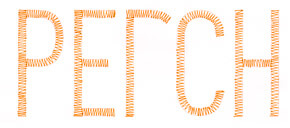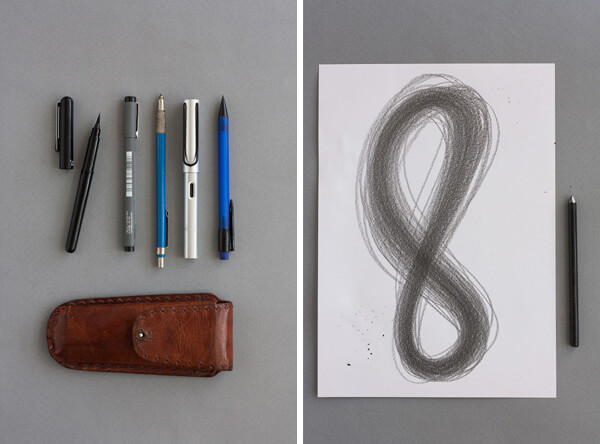“Make a curve like this, and let go of the line like this. You don’t have to complete the letter. Let it look alive, like it is moving,” said Mr. Shah as he sat at the edge of my parents’ sofa. The good man with the gruff voice was demonstrating the drawing of a letter A, with my trusty old Sheaffer calligraphy pen. Looking through my notebooks he said, “your handwriting is good, but you can use the pen to draw. Think of calligraphy as drawing.”
“I like drawing. I want to be an artist.”
“Why not be a graphic designer?”
“What does a graphic designer do?”
“Well. It’s like art. But it’s useful art. Like using art to solve problems.”
And so SM Shah – SM to generations of students – planted the teeny tiny seed in my head. The next week, a large envelope containing reeds, nibs and sticks arrived, along with calligraphy grid books bearing a distinct NID logo in one corner. My twelve-year old self would never have known it, but life had shifted ever so slightly onto a different course.
When I eventually studied design at NID some years later, on our very first day of Design Drawing class, we were instructed to draw a giant figure-8 on an Imperial sized sheet of paper. We were told to keep drawing over and over the original lines until the graphite in the pencil ran out. I started out using the pencil very gingerly – holding it as if I were writing with it. In time, I clamped my fist around the pencil, changed hands, used different grasps and did everything I could to keep going. The cartridge gave way before I exhausted my pencil, but my arms tired even before then. The entire exercise seemed pointless. The figure-8 was obliterated by our retracing and we were left blackened with graphite dust that marked us through the day. The charcoal soot took a week to erase off our white laminated desks.
Drawing had never been such a physical activity for any of us. I had never used so much energy to draw. After a while of making lines, it didn’t matter that we were “drawing” or what we were drawing. All that mattered was the marks and the paper – the physical remains of our effort.
It took me a long time to understand this, but the outcome of a design process is a manifestation of physical activity. It is the mark left by a tool, of ink dropped by a print head, a user interface represented on a screen or a space constructed by human and machine effort. The deliberate action of designing something always has intent and purpose guided by intellect and the knowledge of how a result can be achieved. Skill and talent are equal ingredients in bringing the design process to bear fruit.
In my practice, it means a lot how I make something. The early conception of a work of design may be through an array of tools: a piece of lettering worked out with a pen or a brush carries vastly different qualities. Sometimes those attributes are carried into a digital environment, tweaked or altered, printed out, re-worked and shaped bit by bit. At other times, the self-imposed constraint is to begin with a digital sketch. The starting point makes a world of a difference – it determines the quality of the process and how much I enjoy it. It can be frustrating when you want a brush that holds ink just-so and nothing you own has firm enough bristles. It shows, I think, in a work, whether the maker has enjoyed creating it. Having the right feel of a tool is important.
In using very particular tools for particular actions, and specific approaches to specific problems, I wonder if design is not unlike craft. Like a master carpenter follows the grain of the wood, a designer too follows the grain of a problem: adapting, changing and bending the rules to suit the situation. It’s a dance between intuition and usefulness – a play between sensing and knowing. Often, all you need is a chip in the right corner, or a shift of perspective to put things in place. Sometimes, like the letter A that SM drew on the paper for me, you have to leave things incomplete for them to be complete.
To bring an idea a full circle, the design process needs a certain kind of communion with one’s tools, the constraints of a situation and the clarity of insight to reach an elegant solution. As a designer, I often struggle against the tide, looking for spiffy ways in which to get started on a problem, as if the beginning of the process is so important as to govern the outcome. In fact, what I’ve learned (and still don’t remember often enough) is that all one needs to embark on the design process is to begin, and to give in to the flow. Start with a mark, with a line or a shape, obliterate the figure-8, unlearn how to hold a pencil, and just simply let go.
***
This article was orginally published in Domus India magazine, February, 2015 issue with the title “Talking Design”.
All photographs ©Aditya Palsule. Please do not reproduce without permission.


